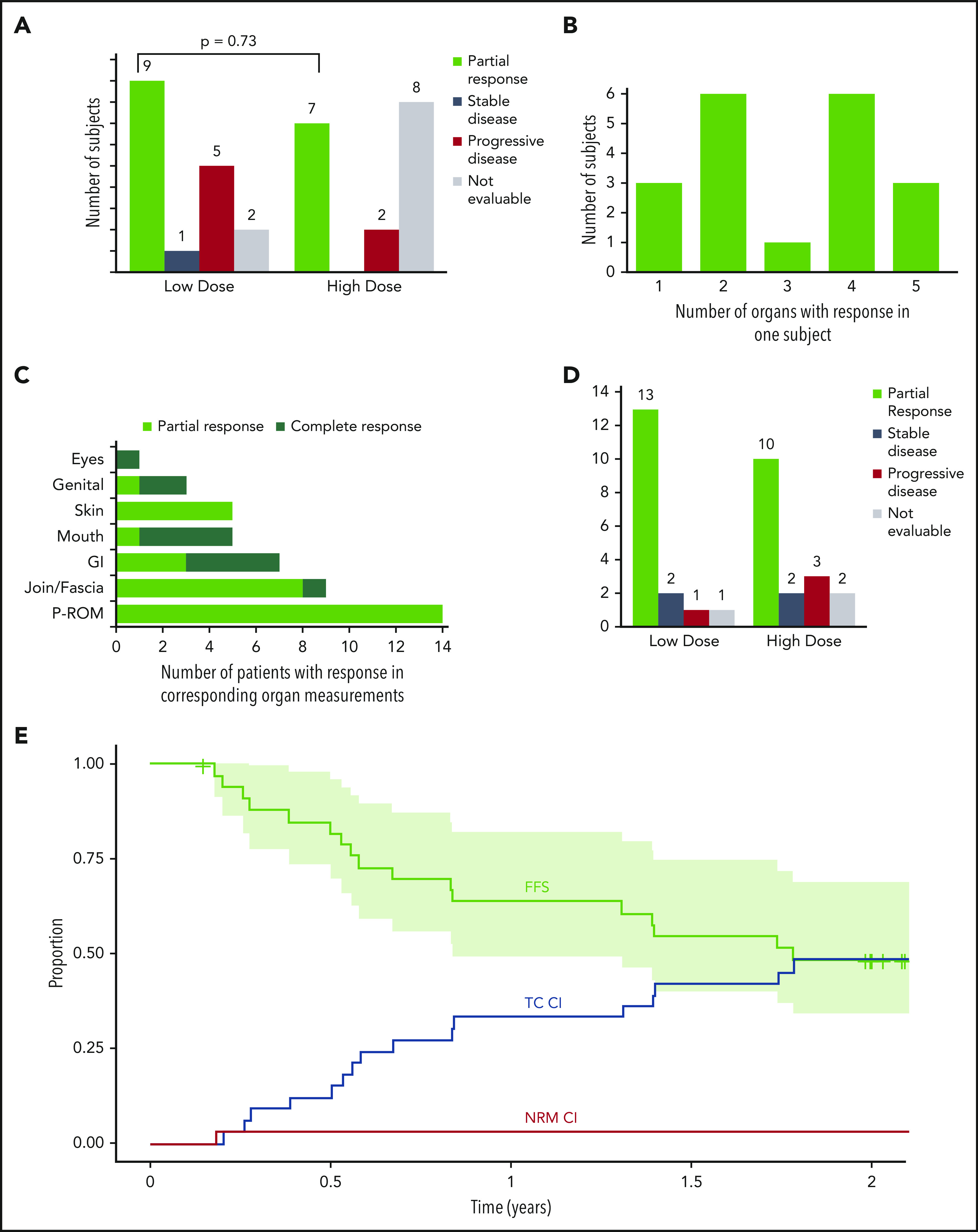Figure 3.

Overall response at 6 months, number of subjects with multiorgan response, organ-specific response, best overall response, and failure-free survival (FFS) with cumulative incidence of FFS events. (A) Number of subjects with PR, stable disease, progressive disease, and not evaluable subjects in the LD and HD cohorts at 6 months, with a comparison of the proportion of subjects with an ORR among the 2 cohorts. (B) Number of subjects with PRs in variable involved organs. (C) Number of subjects with PRs in the specific involved organ. (D) Number of subjects with the best ORR during the study represented as PR, stable disease, progressive disease, and not evaluable in the LD and HD cohorts. (E) Kaplan-Meier FFS curve with cumulative incidence (CI) of the included events: malignancy relapse (none of the subjects experience it during the on-study follow-up), NRM, and treatment change (TC; any additional systemic treatment not previously used as the initial cGVHD treatment but excluding resumption or increment in dose of corticosteroids already used during the previous course of cGVHD treatment24). Curves extend to 24 months after the start of study drug (off-protocol time point). Light-green area represents 95% confidence interval. CI curves are plotted by cumulative incidence function for FFS events; for each of 3 events, the other 2 were considered as competing risk events. GI, gastrointestinal, P-ROM, photographic range of motion.
